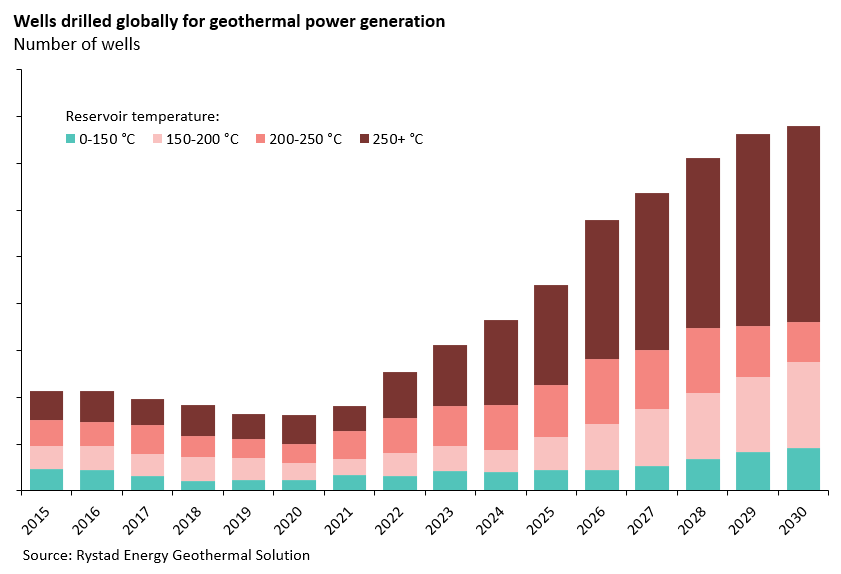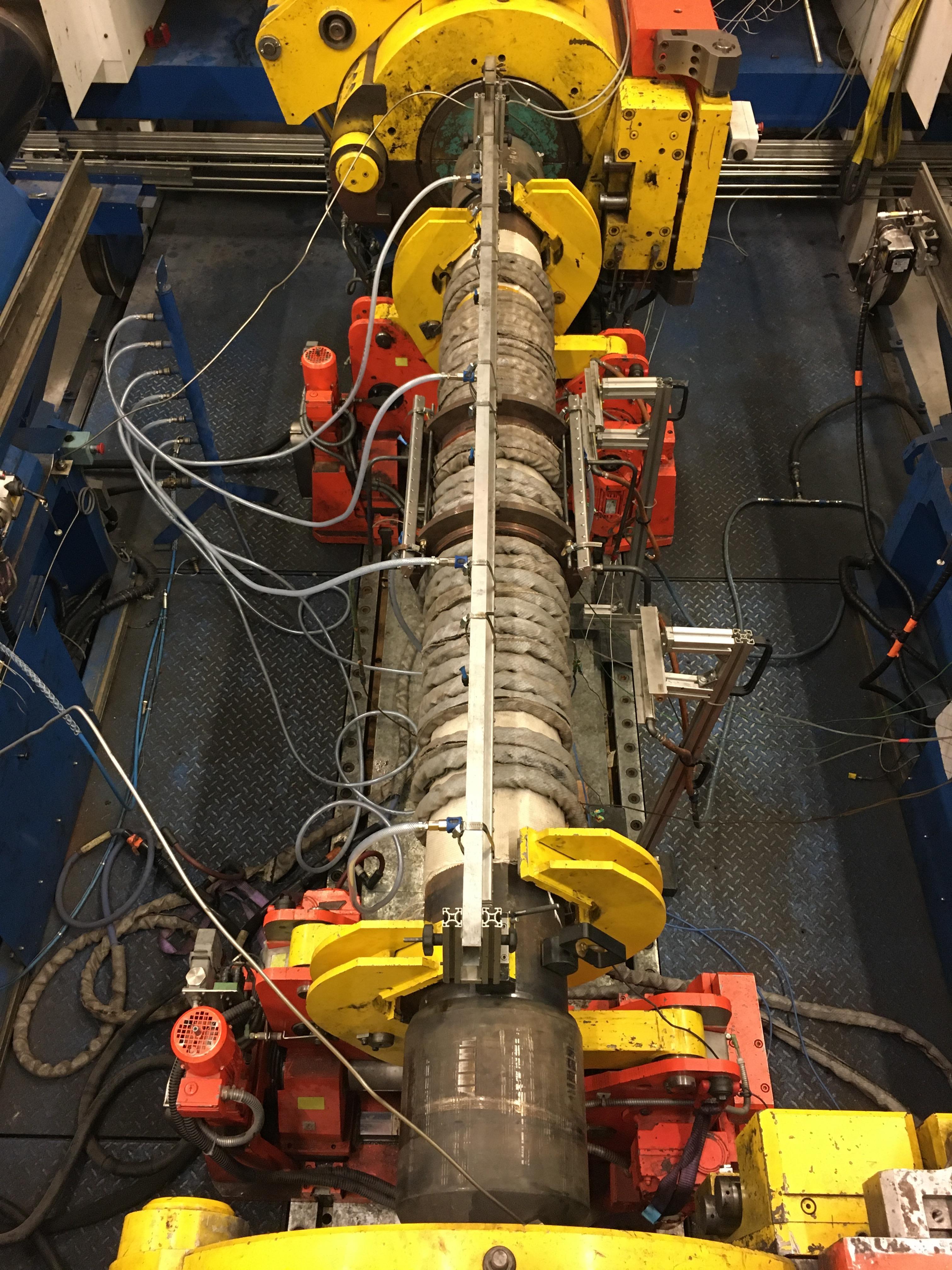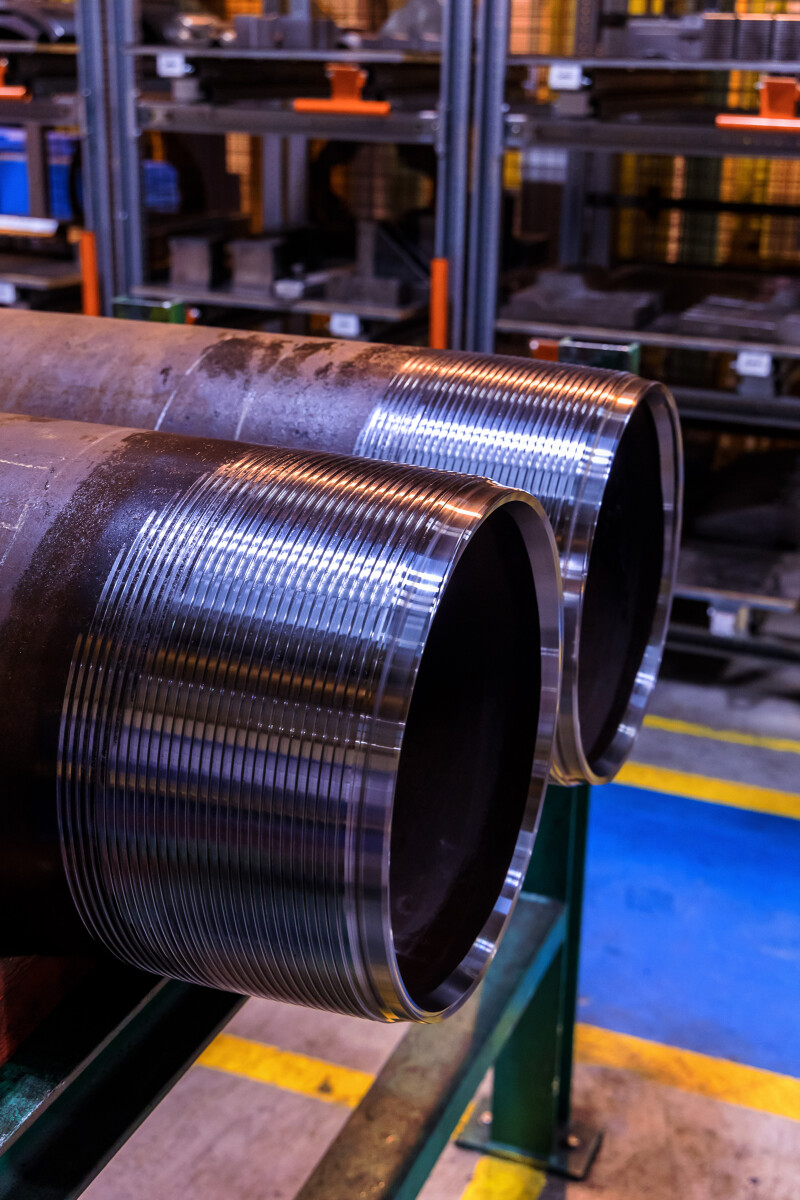Vallourec successfully qualifies VAM® 21 connections for geothermal applications up to 350°C
In a new test protocol, Vallourec has successfully qualified its VAM® 21 connections up to 350°C that offers exciting opportunities for geothermal operators. Fueled by R&D expertise, Vallourec’s teams adapted existing frameworks for geothermal applications based on industry standards and Oil & Gas expertise. Pierre Mauger, R&D Engineer, and François Penven, Marketing & Development Manager for Geothermal Applications, talk about the project.
When you double the temperature, say from 200° C to 400° C, you multiply the energy generated up to 10 times. There is huge potential for the industry to design and validate solutions to build systems at those levels.
Recognized as a low-cost renewable energy, the geothermal sector has seen a large number of operators flocking. Geothermal wells operate at temperatures higher than those typically encountered in the oil and gas (O&G) industry, reaching between 200°C and 350°C. Additionally, the number of geothermal wells operating at high temperatures is expected to increase in popular geothermal regions such as Indonesia, the Philippines, East Africa, Iceland and California. For example, the average reservoir temperature in East African countries, such as Djibouti and Ethiopia, is around 350°C.
The main benefit of operating wells at higher temperatures is that the same process generates a greater amount of energy.

Operators are investing heavily in these wells, with some spending as much as $30 million. “That means these wells need to last a long time”, François says. “The standard well life is 30 years, so all the equipment in the well needs to be designed to also last that long.”
Overcoming high temperature challenges
Connections are key to ensuring a well’s structural integrity, whether in O&G or geothermal operations. Threaded onto the pipes that are used to build geothermal wells, connections ensure all components within the well are connected, sealed and secure. Oil and gas wells usually require connections to be qualified at 180° C. In geothermal wells, given that the pipes and connections are exposed to much higher temperatures, they are even more subject to the effect of material dilatation and need to be qualified accordingly.
As an illustration of this, an API-5CT Range 3 pipe, which is around 12.5 meters long, heated up to 350° C gains around 60 mm of length. This means that for a 2,000 m deep well, if the string is free to move, it gains around 9 meters of length. Given that the casing is cemented, the ends cannot move meaning that the strain is shared along the string.
To accommodate these conditions, the TWCCEP1 standards – the dedicated standards for high temperature wells – require connections to be tested and qualified at 350°C. Not only does this expand the possibilities for geothermal operators, but it also represents an opportunity to harness more energy through the same process.
Vallourec thus tested its VAM® 21 connections at 350°C. While VAM® connections have gone beyond 180° C in the past, the company had never ventured further than the 240°C experienced in high pressure/high temperature O&G well applications. To ensure successful qualification, Vallourec’s teams adapted existing models and developed new testing tools.
Our R&D expertise is our strength. The existing testing frames we have were programmed to test products under stress, not strain. For geothermal, it’s important to test under strain, which occurs when the pipes expand within the well’s cementation. It’s also known as dilatation, and results in great compression loads on connections
How to test geothermal connections to high-temperature standards


To make the test, R&D developed new measuring devices by adapting existing equipment to account for strain. This included adapting heating capacities to reach high temperatures homogeneously throughout the sample. However, adjusting for these new conditions means not only making changes to the frame, but to each and every component throughout the process. This includes the leak trap, monitoring and thermocouples, in addition to modifying operator training and protocol implementation.
“Testing adjustments also included the development of new make & break qualifications”, explains Pierre. “This included using a lubricant that can withstand the higher temperatures”. Additionally, thanks to Vallourec’s connection expertise, the team was able to identify critical sizes and load cycles and reduce the number of samples that needed physical testing following the finite element analysis (FEA) approach.
These developments have provided Vallourec with valuable insights and expertise in geothermal qualification that set it apart from other players in the market, providing a competitive edge.
Standing the tests of time, temperature and compression

“VAM® 21 is designed to be 100% resistant to compression, which is different to previous pipe connection versions,” François says. “In other words, the connection is as strong as the pipe. In its DNA, the connection’s design is resistant to both compression and temperature.”
The TWCCEP qualification ensures that VAM® connections can absorb high levels of strain and induced compression loads without failure or leakage. This also benefits the well. Testing connections at high temperatures contributes to both extended well life and improved well performance.
Another advantage to VAM® 21 is its long history on the market, dating back 12 years. It is now “the acknowledged connection for easy, cost-efficient installation and is used by major operators worldwide,” François says. “VAM® 21 is also used in other severe applications, such as high pressure & high temperature (HPHT) and deep-water wells which demonstrates its reliability and robustness. That’s a strong selling point for VAM® 21”.
For more than three decades, Vallourec has been providing support to geothermal projects. With its range of products, extensive knowledge in the field and new testing protocol, the company is well-equipped to aid customers in pursuing their geothermal ambitions across all hotspots worldwide.

No signs of cooling down
To meet future demands around the world, the company is researching even higher temperatures, up to 450° C.
Vallourec is committed to innovation, working with customers, industry organizations and research centers to exchange ideas and better understand the challenges ahead. As the geothermal market continues to heat up, Vallourec is well prepared for the future.
1-TWCCEP: Thermal Well Casing Connection Evaluation Protocol


